Reports
Burma: A Nuclear Wannabe; Suspicious Links to North Korea; High-Tech Procurements and Enigmatic Facilities
by David Albright, Paul Brannan, Robert Kelley and Andrea Scheel Stricker
January 28, 2010
For several years, suspicions have swirled about the nuclear intentions of Burma’s secretive military dictatorship. Burma is cooperating with North Korea on possible nuclear procurements and appears to be misleading overseas suppliers in obtaining top-of-the-line equipment. Certain equipment, which could be used in a nuclear or missile program, went to isolated Burmese manufacturing compounds of unknown purpose. Although evidence does not exist to make a compelling case that Burma is building secret nuclear reactors or fuel cycle facilities, as has been reported, the information does warrant governments and companies taking extreme caution in any dealings with Burma. The military regime’s suspicious links to North Korea, and apparent willingness to illegally procure high technology goods, make a priority convincing the military government to accept greater transparency.
Suspicions about nuclear intentions followed an agreement by Russia to sell Burma a research reactor in 2001 and intensified in 2007 with the resumption of a formal military relationship between North Korea and Burma, known officially as Myanmar. Secretary of State Hilary Clinton said in July 2009, “We know there are also growing concerns about military cooperation between North Korea and Burma, which we take seriously.”1 According to U.S. officials, these concerns extend to possible nuclear cooperation, but their information is incomplete.2 The evidence supports that Burma and North Korea have discussed nuclear cooperation, but is not sufficient to establish that North Korea is building nuclear facilities for Burma’s military junta, despite recent reports to the contrary.
Nonetheless, no one can ignore the possibility of significant North Korean nuclear assistance to this enigmatic, military regime. Because North Korea secretly sold a reactor to Syria, a sale which the world’s best intelligence agencies missed until late in the reactor’s construction, no one is willing to turn a blind eye to the possibility of North Korea selling nuclear equipment, materials, or facilities to Burma. North Korea’s past proliferation activities and the failure to promptly detect the Syrian reactor cannot but lead to more scrutiny over whether North Korea might sell Burma a reactor or other nuclear industrial equipment and facilities, or the means and guidance to manufacture nuclear facilities. When one adds Burma’s own efforts to acquire abroad sophisticated dual-use goods that can be used for nuclear purposes, it becomes essential to determine and constrain as necessary the military junta’s nuclear intentions.
Another dimension is whether Burma is helping North Korea obtain items for its nuclear programs. Burma could act as a cooperative transshipment partner for goods ultimately destined for North Korea’s gas centrifuge uranium enrichment program.
The military regime’s lack of transparency and repressive actions complicate any effort to investigate suspicions about its nuclear program. A priority is getting the military government to accept greater transparency of its activities.
Because Burma is buying a wide variety of suspicious dual-use goods internationally, governments and companies need to be more vigilant in examining Burma’s enquiries, or requests for equipment, whether via Burmese governmental entities, Burmese trading companies, or other foreign trading companies. Companies should treat enquiries from Burma no differently than those from Iran, Pakistan, or Syria.
Minimal Nuclear Capability
Currently, Burma has little known indigenous nuclear infrastructure to support the construction of nuclear facilities. Nonetheless, it has sought to purchase a nuclear research reactor for about a decade.
In September 2000, Burma asked the International Atomic Energy Agency (IAEA) for assistance in acquiring a research reactor.”3 The IAEA said that it would assist in such an endeavor once Burma achieved a set of milestones, including bringing its reactor safety and regulatory infrastructure up to a minimally acceptable standard. Meanwhile, without telling the IAEA, Burma started negotiations with Russia over the supply of a ten megawatt-thermal research reactor.”4 A draft cooperation agreement was approved by Russia in May 2002 for the construction of a nuclear research center that would include a ten megawatt-thermal research reactor, two laboratories (believed to include hot cells for radioisotope production), and facilities for the disposal of nuclear waste. However, the draft agreement did not represent an approved sale. The two countries finally signed a nuclear cooperation agreement in 2007 for the sale of the reactor complex, but no construction of the research center had started as of September 2009.”5 In addition, neither side has publicly announced the planned location of this reactor project. Under the terms of its cooperation, Russia has reportedly conducted training of Burmese in fields related to the building and operation of research reactors.
Burma receives a relatively small level of technical assistance from the IAEA in nuclear medicine, agriculture, and fields related to research reactors. It also receives nuclear energy training in South Korea with other members of the Association of Southeast Asian Nations (ASEAN).
According to a European intelligence official, Russia assists Burma’s uranium exploration and mining efforts, but this effort is relatively small-scale and has not extended into the construction of a uranium mill to process uranium ore. The Myanmar Ministry of Energy lists five areas with potential for uranium mining: Magwe, Taungdwingyi, Kyaukphygon (Mogok), Kyauksin, and Paongpyin (Mogok).6
Minimal Nuclear Transparency
Burma joined the Nuclear Non-Proliferation Treaty (NPT) in 1992. It insists it is in compliance with all its obligations under the NPT. Evidently in reaction to published reports in the summer of 2009, a Burmese official denied seeking nuclear weapons to Senator Jim Webb on his trip to Burma in August 2009, which was the first visit by a senior U.S. official in a decade.6
Burma has a traditional INFCIRC 153 comprehensive safeguards agreement with the IAEA supplemented by a Small Quantities Protocol (SQP) that it signed in 1995. The SQP is in effect since Burma has declared it has no major nuclear facilities and only small quantities of nuclear material. Under the SQP, the IAEA has agreed not to implement safeguards with a few exceptions, mainly conditions aimed at determining when to implement the safeguards procedures in the comprehensive agreement. These conditions include Burma agreeing to report if it imports or exports nuclear material, acquires more than a minimal amount of nuclear material, or has built a new nuclear facility that is within six months of receiving nuclear material. In the case of the reactor from Russia, Burma would implement the full safeguards agreement, no later than six months before receiving nuclear reactor fuel.
Burma has discussed improving safeguards with the IAEA in the context of the reactor purchase.8 However, Burma has not agreed to update its commitments under the SQP. In particular, it has not agreed to report a nuclear facility when it decides or authorizes its construction rather than six months before Burma introduces nuclear material in the facility. Moreover, it has not agreed to the Additional Protocol, which would obligate Burma to provide far greater information about its nuclear activities and plans and allow the IAEA much greater access to Burmese sites. Implementation of the Additional Protocol could go far in reducing suspicions about reports of undeclared nuclear facilities or materials.
In a new development, it is understood that Burma has indicated an interest in joining the Asia/Pacific Safeguards Network, an Australian initiative which came into operation in October 2009. This network, which comprises authorities and agencies working in safeguards, has yet to consider if Burma should be invited to join.
A new constraint on Burma’s cooperation with North Korea is United Nations Security Council Resolution 1874, which was passed in mid-2009. It prohibits member states from engaging in trade with North Korea in almost all conventional weapons and in sensitive areas, including those related to ballistic missiles and nuclear. Although the Burmese leadership has stated its commitment to fully comply with UNSC Resolution 1874, U.S. officials have expressed worries about the “nature and extent” of Burma’s ties with North Korea.9
Because transparency remains so minimal, the fundamental question remains: has Burma decided to embark on a covert route to nuclear weapons on its own or with the help of North Korea? Burma’s lack of transparency complicates efforts to understand a range of suspicious procurements and reports. These claims can be separated into two broad areas—alleged undeclared nuclear activities or facilities and suspicious or illegal procurement activities.
Alleged Undeclared Nuclear Activities or Facilities
Various dissident groups, researchers, and news reports have claimed that there are covert nuclear sites in Burma, including reactors, uranium mines and mills, reprocessing plants, and uranium enrichment facilities. As far as could be determined, the evidence behind many of these claims is largely based on interviews with defectors or analysis of ground photos and overhead imagery of suspected sites.
The opposition group Dictator Watch (dictatorwatch.org) has published a range of sites it says are nuclear.10 Another researcher, Bertil Lintner, has published a series of photographs taken in the mid-2000s of an extensive series of tunnels built with North Korean assistance.11 He has suggested that some of these might be nuclear-related. More recently, Australian researcher Desmond Ball and Thailand-based Irish-Australian journalist Phil Thorton, citing defector accounts, claimed in the Sydney Morning Herald that Burma is building two secret nuclear reactors; one already built with Russian assistance, (a claim Ball later backed away from in an article in the Australian journal Security Challenges where he instead details the plans to build it12 ) and another one being built with the help of North Korea, which will be secret and used for military purposes.13 In addition, Ball and Thorton reported that based on the defectors’ statements Burma is building or plans to build secret plutonium separation plants, uranium refining and enrichment plants, and facilities to develop and produce the nuclear weapon itself. Dictator Watch head Roland Watson claims that much of Ball and Thorton’s information was published earlier by Dictator Watch, relying on the same defectors.14
The nuclear allegations in these reports are not in general confirmed. As the Australian researchers admit, any information based on interviews with Burmese defectors must be approached cautiously.15 The sheer number of alleged secret sites posited by these defectors by itself raises doubts about their claims.
Only in a few cases do the reports listing nuclear sites have enough information to assess their veracity using satellite imagery. In these cases, however, where ISIS could identify specific sites claimed to be nuclear, it assessed that the sites were not in fact nuclear facilities. ISIS reviewed the ground photographs of suspected tunnel facilities in Burma obtained by Bertil Lintner and published on YaleGlobal Online and determined that at least one of the purported tunnel entrances is a dam penstock (see figure 1).16 Other photographs do indeed depict tunnel entrances and indoor storage facilities, but are likely not nuclear industrial facilities. ISIS could not identify any nuclear industrial characteristics in the photos.
ISIS assessed claims made by DictatorWatch.org and cited by the Sydney Morning Herald of a covert uranium mine and mill near Mandalay in Burma.17 After an analysis of available satellite and ground imagery and relevant open source information, ISIS assessed that the suspected uranium mill was too large to be a small clandestine uranium operation, and ground photographs of an established commercial cement plant matched very closely with the overhead imagery claimed by DictatorWatch to depict the uranium mill.18 ISIS also assessed that the suspected uranium mine was probably a quarry, judging by the piecemeal scraping marks in the mountain. A covert uranium mine would likely utilize modern open-pit or underground mining techniques.
ISIS does not want to overweigh the importance of debunking a few claims about secret nuclear facilities in Burma. There remain legitimate reasons to suspect the existence of undeclared nuclear activities in Burma, particularly in the context of North Korean cooperation. But the methods used in the public domain so far to identify existing suspect Burmese nuclear facilities are flawed. Identification of suspect nuclear sites requires a more rigorous basis than is currently evident.
Suspicious or Illegal Procurement Activities
Burma is judged as unable to build nuclear facilities on its own. As a result, it must depend on outside suppliers for nuclear technology, equipment, materials, and facilities. Therefore, detecting suspicious Burmese procurements is potentially an important indicator of undeclared nuclear materials and facilities.
Burma is seeking abroad a large quantity of top-notch, highly sophisticated goods with potential missile and nuclear uses. Yet, no pattern has emerged in these procurements that lead to a specific missile or nuclear end use. Nonetheless, the procurements are often suspicious or highly enigmatic, according to one senior European intelligence official.
The Burmese military regime might use North Korean trading entities to acquire overseas sensitive nuclear and nuclear dual use goods. Its military cooperation with North Korea has increased over the last several years, fueling concerns about nuclear cooperation. North Korea could also supplement Burma’s own foreign procurement networks, and it could sell nuclear goods made in North Korea.
For its part, North Korea would find such an arrangement lucrative, and it could use Burma as a willing transshipment point, or turntable, for illicit sales for itself or others. Another, albeit less likely, possibility is that North Korea could build sensitive facilities in Burma for its own use.
There are lingering questions about two Pakistani nuclear scientists who reportedly went to Burma in late 2001, during a time of intense interest over any help these same Pakistani nuclear scientists could have provided al Qaeda in Afghanistan before the fall of the Taliban. The two, Suleiman Asad and Muhammed Ali Mukhtar, reportedly left Pakistan with the agreement of the Pakistani government to elude questioning by the United States.19 Burmese officials subsequently denied giving sanctuary to any Pakistani nuclear scientists.20 Their whereabouts or activities since then remain unknown.
Namchongang
Evidence of North Korean/Burmese cooperation includes the reported presence in Burma of officials from Namchongang Trading (NCG), a North Korean trading company that is sanctioned by U.N. Security Council. Syria’s reactor project depended on assistance from NCG.
The nature of the Burmese/NCG cooperation remains largely unknown, but NCG has reportedly sold equipment to Burma or provided some type of technical assistance.21 As mentioned above, there is no concrete evidence that North Korea is supplying Burma a reactor, but any involvement by NCG in Burma is bound to increase suspicions about such a sale.
Reports of North Korea selling a reactor to Burma date back to at least 2004, a time when NCG was helping Syria acquire its reactor.22 According to a 2004 Asia Times article, citing Indian intelligence, Burma approached North Korea in November 2002 as a seller of last resort after the military regime failed to acquire a reactor from Russia, China, and India.23 Russia at the time had signed only a draft reactor sales agreement. India turned down Burma’s request for a reactor in 2000, according to the article, because of India’s view that Burma did not need such a reactor and was concerned about riling the United States which had sanctions on Burma. The Asia Times article makes the additional claim that a reactor deal was signed between Burma and North Korea in early 2004.24 But all these claims remain unconfirmed.
New East International Trading
In June 2009, Japan arrested three individuals for attempting to illegally export a magnetometer to Burma via Malaysia,25 under the direction of a company associated with illicit procurement for North Korean military programs.26 Authorities learned subsequently that this group successfully delivered other nuclear dual-use equipment to Burma.
The original order for the magnetometer came from the Beijing office of New East International Trading, Ltd., which reportedly operates under the direction of North Korea. The company is headquartered in Hong Kong but also has a Pyongyang office, which is flagged by watch lists of the Japanese Ministry of Economy, Trade, and Industry (METI) for its involvement in illicit procurement for North Korean military programs.27
The magnetometer, which is a dual-use instrument that measures magnetic fields, was intercepted before it made its way to Burma. In addition to legitimate commercial uses in archaeological and geophysical sciences, a magnetometer can be employed in making missile control system magnets and gas centrifuge magnets (in magnetizing magnets and measuring strength).28 This item is controlled under Japan’s “catch-all” regulations, which ban the export of dual-use items for military applications to countries such as North Korea or Burma. Japanese officials seized the item in January 2009 and launched an investigation which later led to the arrests.
The three individuals, one of North Korean nationality and two of Japanese nationality, were the heads of three separate Japanese entities: Li Gyeong Ho, a North Korean national was president of the Toko Boeki trading company; Hirohiko Muto was president of Taikyo Sangyo trading company (internet searches indicate this may be a clothing company); and Miaki Katsuki, was president of Riken Denshi Company. Riken Denshi was the manufacturer of the magnetometer.
In September 2008, Li Gyeong Ho, under direction of the Beijing office of New East International Trading, asked Muto at Taikyo Sangyo to submit documents to the local customs authorities for the purpose of exporting the device. METI informed the company that an export license was required and the export could not be authorized.29
At this time, the accused conspired to export the item to Burma via Malaysia without a license. In January 2009, the three conspired to replace the name on the customs documents to that of Riken Denshi and tried to export the item for seven million yen, or about $72,500, without a license from METI.30 The export was stopped by customs agents in Japan, and METI confirmed the company had not applied for an export license.31 In February, the premises of Toko Boeki were searched.32 The individuals were charged with violating Japan’s Foreign Exchange and Foreign Trade Law by attempting to export the magnetometer without a license.
The magnetometer was not the only item ordered by New East International Trading for shipment to Burma by Toko Boeki. In August 2008, Toko Boeki exported to Burma two small cylindrical grinders, each valued at 2.5 million yen, or about $28,000, without permission of Japanese authorities; this type of grinder, which was produced by Manba Seisakusho Co. Ltd, can be used to make missile control systems and to grind magnets for gas centrifuges.33 In November 2008, Toko Boeki exported another cylindrical grinder to Burma. Burma’s Ministry of Industry No. 2 reportedly received the grinders.34
In November 2009, Li Gyeong Ho of Toko Boeki trading company was found guilty and given a two year suspended sentence and a fine of six million yen (about $67,000). In his ruling, the judge said that all these exports or attempted exports involved “all dangerous equipment used to develop and/or manufacture nuclear weapons.”35 The judge concluded that there was “thus a risk of greatly affecting the peace and security of Japan and the world.”36
Although this case implies that North Korea was purchasing dual-use equipment for Burma, the investigation did not confirm whether the items were intended for use in Burma in a missile or nuclear program or for shipment onward to North Korea or another country.
Suspicious Procurements by Burmese Educational Entity
According to a European intelligence official, in 2006 and 2007 Burma made a series of procurements of extremely high precision, expensive dual-use industrial equipment, including computer-numerically controlled (CNC) machine tools, from companies located in Switzerland, Germany, and Japan. An official from another government knowledgeable about the case confirmed to ISIS these top-of-the-line procurements.
The equipment was ordered by an agency of the Burmese government ostensibly responsible for technical education programs in the country, the Department of Technical and Vocational Education (DTVE) under the Ministry of Science and Technology. However, the equipment is too sophisticated for normal teaching and student endeavors. At the time of the orders, according to a European government official, the head of the DTVE was Dr. Ko Ko Oo, who was also the head of Burma’s Department of Atomic Energy (DAE), also under the Ministry of Science and Technology. Officials in the DTVE have significant personnel links and associations with the DAE.37 In 2003, both entities shared a physical address at the Ministry of Science and Technology, and an official at the DTVE had an e-mail address at the Department of Atomic Energy, dae.myatom@mptmail.net.mm. Both entities have since moved to the new capital of Naypyidaw.
In such a small country, officials might wear more than one “hat,” and nuclear officials might do more than just nuclear. But the connection raises the issue of whether the equipment is intended for a nuclear purpose or whether the DTVE acts as a procurement front for the Department of Atomic Energy or a military entity.
It is unclear if the procurements in Europe were legal—though if the equipment were ultimately used in a military or nuclear program, these procurements should be against the law in most European countries. The procurement route and the export’s legality are unknown for the equipment sent from Japan to Burma.
Upon closer examination by European officials, the declared end use of the computer-numerically controlled (CNC) machine tools did not look credible. According to one European intelligence official, the declared end use had too many inconsistencies to believe what was claimed. Some of the CNC equipment was very large, with a base of about eight meters, and declared for use in manufacturing sophisticated locomotive diesel engine parts. But designs of parts given to suppliers appeared incomplete; they were missing key tolerances. Officials suspected that the designs were phony and the equipment would actually be used to manufacture other parts. In addition, the quality and price of the equipment is beyond what Burma would be expected to purchase or need, given its relatively primitive diesel locomotive manufacturing base and its modest plans for expanding this manufacturing capability.38
European intelligence services yielded that the equipment was multi-purpose, running the gamut of possible uses, including turbines in aircraft, high-technology civilian manufacturing, missile parts, or nuclear component manufacturing. The equipment appeared oversized for gas centrifuge manufacturing. It could still be used to make centrifuge parts, but it is uneconomical to buy such large equipment for this end use. In addition, the equipment appeared too precise for missile manufacturing, but it could still be dedicated to such a purpose.
ISIS has learned that two sets of this high precision equipment were sent to two separate industrial buildings, at least one of which was recently built. Both buildings are said to be similar-looking; they are located a distance from any major city and have extensive security.
Figure 2 shows one of the buildings, which is a large, blue-roofed structure located ten miles northeast of the town Pyin Oo Lwin, where Burma’s Defense Services Academy training facility and other military installations are located, and about 35 miles from Mandalay, the nearest major city. This building is at the end of a long road set back from the main highway and appears remote.
Figure 3 shows the second building. It is located approximately 80 miles west of Mandalay (21.723862, 94.766464) (see figure 4). It has very similar characteristics to the first building near Pyin Oo Lwin. The building is located on an isolated compound and sits on a wide foundation; its side lengths are essentially identical to the first building (~80 meters), the roof is vaulted and it appears to be blue in color (see figure 5). A European intelligence agency confirmed to ISIS that this is indeed the second building.
The buildings’ distance from a major city is odd because one would expect facilities that make locomotive engines or sophisticated parts to be near a major city and a skilled civilian work force. In contrast, a workforce operating at the first building in figure 2 would need to travel about one hour by bus from Mandalay to reach it. In fact, the equipment would be expected to go to existing diesel locomotive manufacturing facilities, in particular the Insein Locomotive Shed and the Ywahtaung Diesel Locomotive Shed, both of which were being upgraded in 2006 to make diesel locomotives and are located near Yangon and Mandalay, respectively (see figures 6 and 7). 39
The building in figure 2 was built inside a deep hole, according to an intelligence official. It appears to be a large industrial building (270 feet on each side) with a 40-foot wide road leading to the building. The width of the road would imply the use of long trucks or trucks hauling wide or long objects.
Commercial satellite images of the building seen in figure 2 dating to 2005, early in its construction phase, show large, sturdy foundations, but the building judged as unsuitable to support a nuclear reactor.40 Additionally, no railroad tracks are visible in figure 2, which suggests the building is not for assembling locomotives.
At first, European analysts believed that Burma was not the actual end user of these sophisticated imports, and thought perhaps North Korea was the hidden buyer. The buildings lacked vital climate control equipment, including air conditioning. Because excess humidity can damage the dual-use equipment, initial assessments assumed that Burma intended to ship the equipment elsewhere. But as of mid-2009, the equipment was still in Burma. In addition, no connection to another country has been established.
Some speculate that North Korea could locate military industries inside Burma. But is the Burmese workforce sufficiently trained to operate them for North Korea? The workforce in North Korea is more highly skilled, and North Korea can procure CNC machines for itself. Nonetheless, a joint Burmese/North Korean military or nuclear enterprise might make sense.
The question that remains is what is Burma planning to do with the equipment in these buildings? Is the planned use really for making locomotive diesel engine parts or is it related to nuclear, missile, or conventional weapons? A key challenge is how to determine the true purpose of these imports of sophisticated machinery and ensure that future ones are subject to more scrutiny by supplier states.
Conclusion and Policy Recommendations:
There remain sound reasons to suspect that the military regime in Burma might be pursuing a long-term strategy to make nuclear weapons. Despite the public reports to the contrary, the military junta does not appear to be close to establishing a significant nuclear capability. Information suggesting the construction of major nuclear facilities appears unreliable or inconclusive.
Assigning a purpose to suspicious procurements likewise remains uncertain. The procurements are multi-purpose and difficult to correlate conclusively with a secret missile or nuclear program. Although Burma and North Korea appear to be cooperating on illegal procurements, who is helping who cannot be determined with the available information. Is North Korea helping Burma acquire nuclear, conventional weapon, or missile capabilities or is Burma assisting North Korea acquire this equipment?
Nonetheless, the evidence supports that the regime wants to develop a nuclear capability of some type, but whether its ultimate purpose is peaceful or military remains a mystery. The outstanding questions about the regime’s activities require that there be more scrutiny of Burma to ascertain if there is an underlying secret nuclear program. Because Burma’s known nuclear program is so small, the United States and its allies have an opportunity to both engage and pressure the military regime in a manner that would make it extremely difficult for Burma to acquire a nuclear weapons capability, let alone nuclear weapons.
A priority is to establish greater transparency over Burma’s and North Korea’s activities and inhibit any nuclear or nuclear dual-use transfers to Burma. A related problem is ensuring that Burma is not helping North Korea acquire nuclear and other military goods illegally. Vigorous implementation of the recent U.N. Security Council Resolution 1874 on North Korea is helpful to these goals. The U.S. and other governments should continue to press Burma’s military regime to abide by this resolution. To reinforce this message, Burma should be made more aware of the penalties of being labeled a pariah state.
The United States and its European allies have strained relations with the military dictatorship with few opportunities to appeal to Burma’s military regime. At the same time, the regime has demonstrated little interest in breaking out of its isolation, although it has shown a recent interest in engaging with the United States. The Obama administration is right to try to exploit this interest by attempting to engage with the regime, despite the obvious difficulties. A stated U.S. goal is to induce the regime to break or diminish its relationship with North Korea.
Russia should be privately encouraged that before it provides Burma with a research reactor, the regime needs to meet a set of specific conditions. More effective safeguards would be the principal condition, including the Additional Protocol along with upgraded safety and security infrastructure. Also necessary are verifiable commitments by the Burmese regime to not procure equipment illicitly and to abide by U.N. Security Council Resolution 1874, which would mean Burma would not buy any nuclear facilities, equipment, or materials from North Korea.
Burma’s suspicious procurements as well as its cooperation with North Korea should cause suppliers to be more vigilant. Suppliers need to exercise greater caution about enquiries from Burmese entities or companies in other countries where there is an indication that goods are destined for Burma.
Governments should warn their companies about possible attempts by Burma to acquire high precision machinery or other sensitive dual use items. The countries that supplied the high-precision equipment in 2006 and 2007 should find a legal justification to press for access to the equipment in order to verify that it is being used for its declared purpose.
The United States is planning to hold more discussions with Burma. In these discussions, the United States should press for access to certain suspicious sites as a way to build confidence.
The Syrian reactor, Iran’s gas centrifuge uranium enrichment program, and Pakistan’s highly enriched uranium program were all enabled in large part because of the failure of the international community to halt the illicit sale of nuclear-related technology. The international community has a unique opportunity to set a new precedent and prevent Burma from acquiring materials that could eventually be used in an unsafeguarded nuclear program. Burma has no reason to seek nuclear weapons. The international community should convince Burma that pledging not to do so in a truly verifiable manner could provide significant benefits.
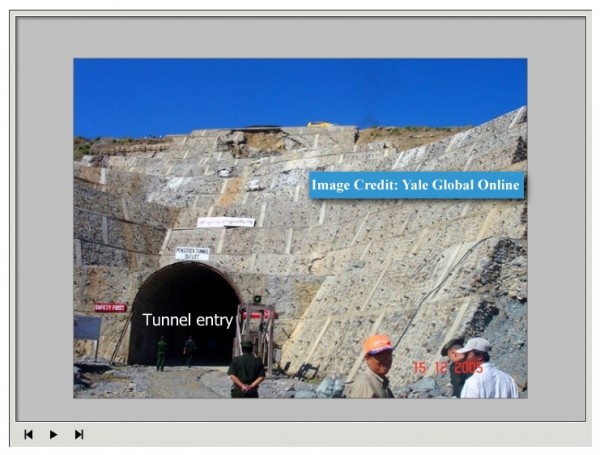
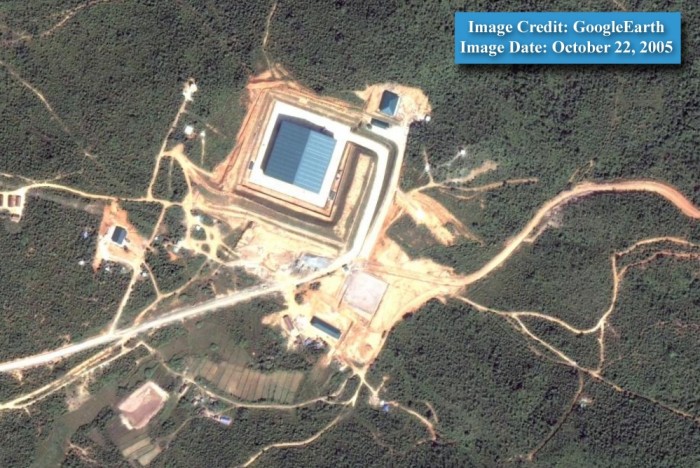
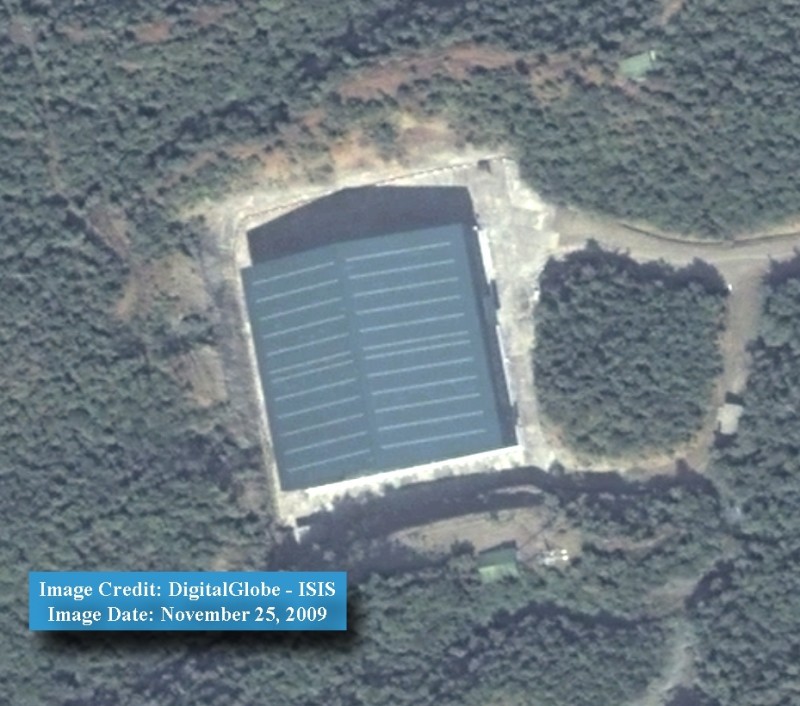

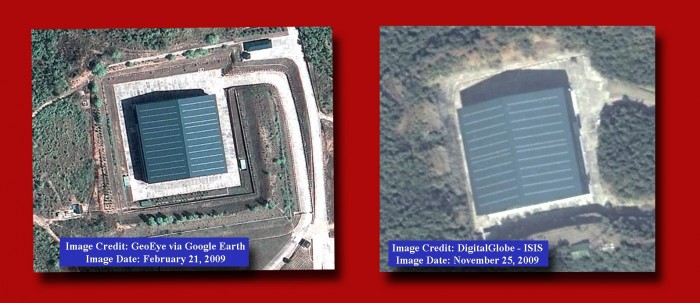
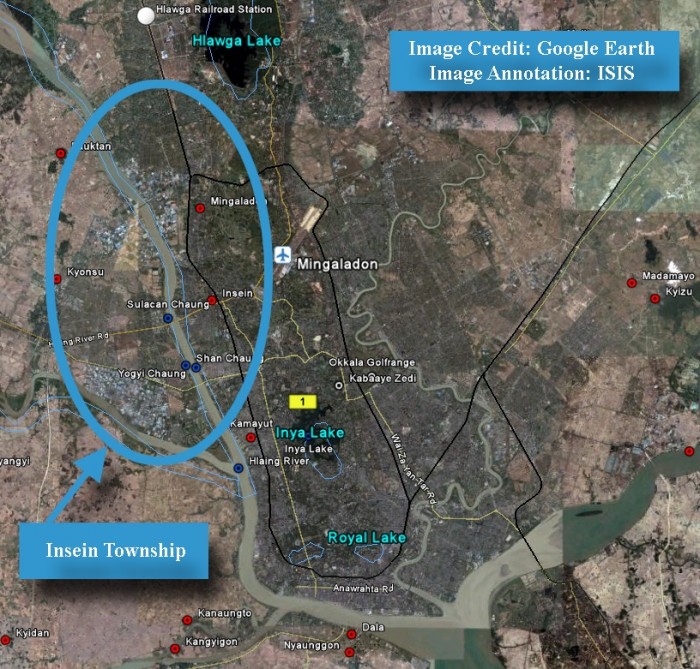
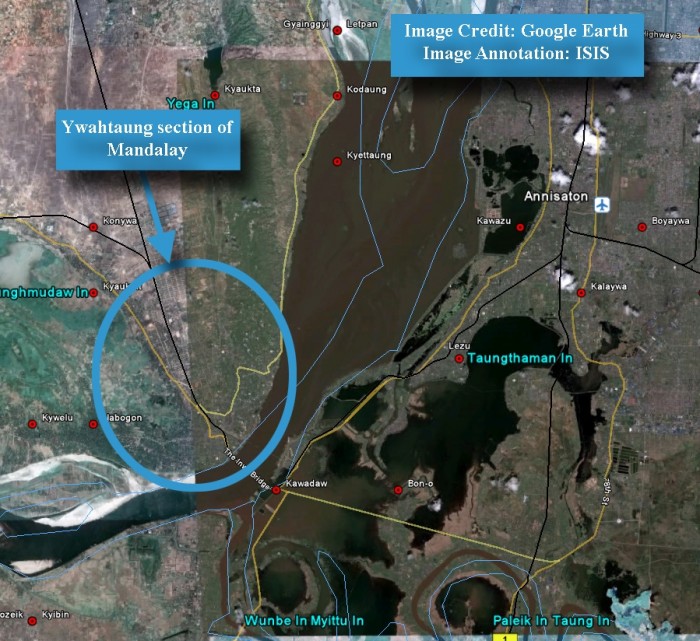
1Glenn Kessler, “Clinton: U.S. Wary of Growing Burmese, North Korean Military Cooperation,” The Washington Post, July 21, 2009.
<
p> 2Ibid.
<
p> 3Briefing to ISIS staff by IAEA officials, January 28, 2002.
<
p> 4Ibid.
<
p> 5“Statement of the Leader of the Myanmar Delegation J.E. U Tin Win to the 53rd Annual Regular Session of the IAEA General Conference,” International Atomic Energy Agency, Vienna, September 14-18, 2009.
<
p> 6Myanmar Ministry of Energy, “Nuclear Energy: Uranium Ore Deposits of Myanmar.” http://www.energy.gov.mm/nuclearenergysubsector.htm
<
p> 7Michael Sullivan, “Does Myanmar Want Nuclear Weapons,” National Public Radio. August 24, 2009. Transcript of radio broadcast.
<
p> 8“Statement of the Leader of the Myanmar Delegation to the IAEA General Conference.”
<
p> 9Kurt Campbell, Assistant Secretary, Bureau of East Asian and Pacific Affairs, Statement Before the House Committee on Foreign Affairs, Washington, D.C., October 21, 2009.
<
p> 10For an example of an alleged uranium mine and mill, see DictatorWatch.org, March 2007, http://www.dictatorwatch.org/phshows/burmafacility.html.
<
p> 11Bertil Lintner, “Burma’s Nuclear Temptation,” YaleGlobal Online, December 3, 2008: http://yaleglobal.yale.edu/display.article?id=11673. Bertil Lintner, “Tunnels, Guns and Kimchi: North Korea’s Quest for Dollars – Part 1,” YaleGlobal Online, June 9, 2009: http://yaleglobal.yale.edu/display.article?id=12442 .
<
p> 12Desmond Ball, “Burma’s Nuclear Programs: The Defectors’ Story,” Security Challenges, Vol. 5, No. 4 (Summer 2009). http://www.securitychallenges.org.au/ArticlePages/vol5no4Ball.html.
<
p> 13Desmond Ball and Phil Thorton, “Burma’s Nuclear Secrets,” The Sydney Morning Herald, August 1, 2009, http://www.smh.com.au/news/world/burma8217s-nuclear-secrets/2009/07/31/1248977197670.html?page=fullpage#contentSwap2
<
p> 14Letter to Desmond Ball and Phil Thorton from Roland Watson, DictatorWatch, August 3, 2009. www.dictatorwatch.org.
<
p> 15“Burma’s Nuclear Programs: The Defectors’ Story.”
<
p> 16Imagery Brief of Tunnel Complex and Unidentified Building in Myanmar, ISIS, August 3, 2009. http://isis-online.org/uploads/isis-reports/documents/Burma_tunnels_3August2009.pdf
<
p> 17DictatorWatch, March 2007, http://www.dictatorwatch.org/phshows/burmafacility.html; “Burma’s Nuclear Secrets.”
<
p> 18Robert Kelley, Andrea Scheel Stricker, and Paul Brannan, Exploring Claims about Secret Nuclear Sites in Myanmar, ISIS, January 28, 2010.
<
p> 19“Pakistani Connection,” The Pioneer (New Delhi), December 19, 2001.
<
p> 20“Myanmar Confirms Plans to Build Nuclear Research Reactor,” Agence-France Presse. January 22, 2002.
<
p> 21Jay Solomon, “Tests Point to Spread of Weapons Trade,” The Wall Street Journal, May 28, 2009; interviews with a senior European intelligence agency official.
<
p> 22Arun Bhattacharjee, “India Frets Over Yangon-Pyongyang Deal,” Asia Times, June 4, 2004.
<
p> 23Ibid.
<
p> 24Ibid.
<
p> 25That the item was allegedly intended for transshipment through Malaysia is indicated in: Mari Yamaguchi, “Japan Holds 3 Accused of Trading for NKorea,” Associated Press. June 30, 2009. http://www.etaiwannews.com/etn/news_content.php?id=990278&lang=eng_news.
<
p> 26“Japan Holds 3 Accused.”
<
p> 27“3 Held Over Export Bid of DPRK Missile Know-How to Myanmar,” The Yomiuri Shimbun, June 30, 2009. http://www.yomiuri.co.jp/dy/national/20090630TDY01304.htm.
<
p> 28“3 Execs Arrested for Attempting to Export “Dual-Use” Technology to Myanmar,” The Mainichi Daily, June 30, 2009. http://mdn.mainichi.jp/mdnnews/news/20090630p2a00m0na015000c.html.
<
p> 29Ibid.
<
p> 30“3 Held Over Export Bid.”
<
p> 31“Japan Holds 3 Accused.”
<
p> 32Takashi Hirokawa and Sachiko Sakamaki, “Japanese Police Search Firm Linked to North Korea, Kawamura Says,” Bloomberg. February 26, 2009.
<
p> 33“Tokyo Trader Charged with Selling Sensitive Machines to Myanmar,” Zee News. July 24, 2009; and Summary of Judgment, Sentence passed November 5, 2009 (translated from Japanese).
<
p> 34Ibid.
<
p> 35Summary of Judgment.
<
p> 36Ibid.
<
p> 37Andrea Scheel Stricker, Deep Connections between Myanmar’s Department of Technical and Vocational Education and Department of Atomic Energy, ISIS, January 28, 2010.
<
p> 38“Prime Minister on Inspection Tour of Myitnge Carriage and Wagon Workshop, Ywahtaung Diesel Locomotive Shed,” The New Light of Myanmar, September 27, 2006. See also http://missions.itu.int/~myanmar/07nlm/n070420.htm and http://www.mrtv3.net.mm/open3/010507tran.html
<
p> 39Information Sheet, Myanmar Information Committee, Yangon, September 27, 2006: http://www.myanmar-information.net/infosheet/2006/060927.htm
<
p> 40http://www.armscontrolverification.org/2009/08/box-in-burma-preliminary-analysis.html; See also Imagery Brief of Tunnel Complex and Unidentified Building in Myanmar, ISIS, op. cit.; http://www.armscontrolwonk.com/2407/big-odd-myanmar-box; and http://www.armscontrolwonk.com/2412/oconnor-on-the-bob
<
p>
<
p>

 twitter
twitter